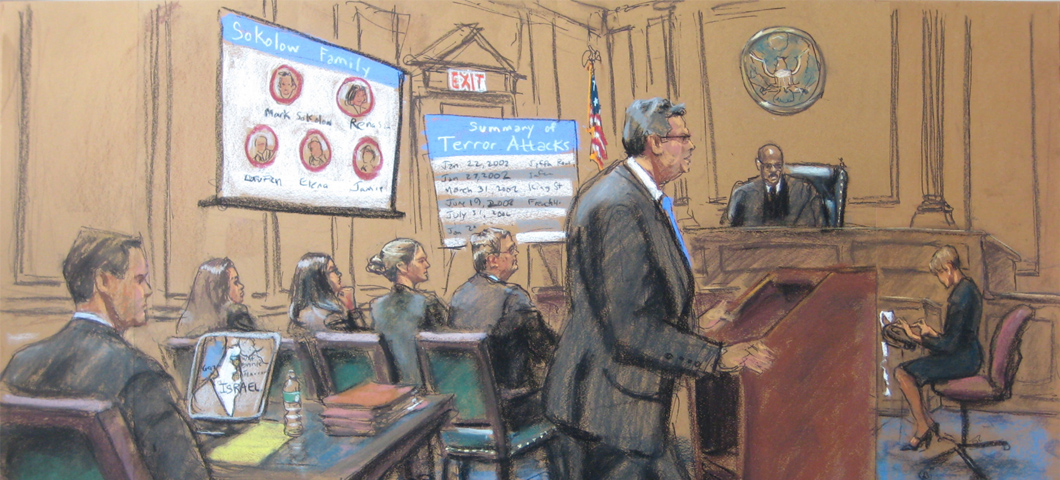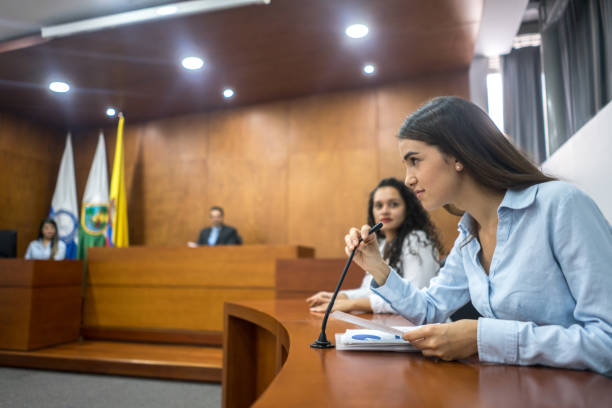From Concept to Courtroom: Steps to Create Effective and Persuading Trial Presentations
From Concept to Courtroom: Steps to Create Effective and Persuading Trial Presentations
Blog Article
Browsing the Intricacies of Trial Presentations: Tips for Seamless Delivery and Engaging Debates
In the world of legal procedures, the art of test presentation stands as an essential component of success. The complexities intrinsic in test discussions require a delicate equilibrium of approach, skill, and ability.

Comprehending Trial Objectives
To efficiently browse a trial, it is important to have a clear understanding of the goals that require to be achieved. Prior to tipping into the courtroom, legal groups should define their objectives and preferred results. These goals act as leading concepts throughout the test, forming methods and affecting decision-making processes.
Recognizing trial objectives includes a detailed analysis of the situation, lawful precedents, and the client's benefits. Trial Presentations. It calls for a meticulous evaluation of the realities, identifying crucial concerns, and expecting possible challenges. By establishing quantifiable and specific goals, lawyers can tailor their presentations and arguments to line up with the preferred outcomes
Moreover, a clear grip of trial objectives enables lawful groups to prioritize evidence, witnesses, and lawful disagreements efficiently. It permits the development of a systematic story that resonates with the discretionary, enhancing the general instance presentation.

Organizing Proof Successfully
Having a clear understanding of trial goals lays the structure for arranging proof effectively in lawful proceedings - Trial Presentations. By lining up the discussion of evidence with the desired outcomes of the trial, lawful groups can reinforce their disagreements and boost their persuasiveness. One important aspect of arranging evidence is categorization. Grouping proof based upon themes or significance to details legal aspects can assist enhance the presentation and make complex details more digestible for the court or jury.
One more trick component in organizing evidence effectively is establishing a sensible circulation. Offering proof in a meaningful and sequential way can assist construct a compelling story that supports the lawful arguments being made. In addition, making use of aesthetic aids such as charts, timelines, or charts can better boost the organization of evidence and aid in clarifying complicated partnerships or sequences of occasions.
Furthermore, guaranteeing that all proof presented is relevant and acceptable to the situation is essential. Inadmissible or irrelevant evidence can interfere with the strength of the debate and potentially damage the integrity of the presenting party. Therefore, a precise testimonial and option process should be carried out to include just the most impactful and legitimately sound proof in the test presentation.
Crafting Convincing Stories
Crafting compelling narratives plays a crucial function in presenting persuasive disagreements throughout legal proceedings. When building a story for a trial presentation, it is essential to establish a clear story that highlights essential factors and links them in a systematic fashion. By weaving with each other proof, testament, and lawful debates right into a convincing and cohesive narrative, legal specialists can properly advocate for their clients and enhance the probability of a favorable outcome in the court.
Grasping Aesthetic Help
Efficient use aesthetic help is crucial to improving the influence and clarity of trial discussions. Visual aids, when utilized strategically, have the power to simplify complex information, enhance essential factors, and leave a long-term impression on the discretionary. To master visual aids in trial discussions, it is essential to make sure that they are clear, succinct, and appropriate to the arguments being made.
When incorporating aesthetic aids, such as graphes, photographs, graphs, or timelines, into a test discussion, it is important to maintain them visually appealing yet specialist. The visuals need to complement the verbal debates, offering an aesthetic depiction of the information being talked about without frustrating the audience with unneeded details.
Moreover, experimenting the aesthetic aids beforehand is important to guarantee a smooth distribution during the test. Acquainting oneself with the content, transitions, and timings of each visual aid can help keep the flow of the discussion and prevent technological problems that may emerge.
Supplying Impactful Closing Disagreements
A compelling closing argument offers as the culmination of a trial presentation, enveloping the core story and encouraging the judge and jury in the direction of a positive decision. Begin by describing the primary debates that support your client's position, highlighting why the evidence provided throughout the test sustains your narrative.
Furthermore, incorporating emotional charm can additionally Source strengthen your closing debate. Ultimately, a well-crafted closing argument need to leave a long lasting perception, engaging the judge and court to rule in your client's support.
Conclusion
Finally, understanding trial discussions involves understanding objectives, organizing evidence, crafting stories, making use of aesthetic aids, and delivering impactful closing arguments. By implementing these approaches successfully, attorneys can provide their situation effortlessly and make engaging disagreements in the courtroom. It is important to navigate the intricacies of test presentations with accuracy and ability to achieve success in legal procedures.
By straightening the discussion of proof with the preferred outcomes of the test, lawful teams can strengthen their disagreements and boost their persuasiveness (Trial Presentations). To grasp visual help in test presentations, it is essential to ensure that they are clear, concise, and appropriate to the disagreements being made
A compelling closing debate serves as the conclusion of a test discussion, enveloping the core narrative and convincing Our site the judge check out here and court in the direction of a favorable choice. Begin by detailing the major debates that sustain your client's setting, emphasizing why the evidence provided throughout the trial supports your story.In conclusion, grasping test presentations involves understanding objectives, arranging evidence, crafting narratives, utilizing visual help, and providing impactful closing arguments.
Report this page